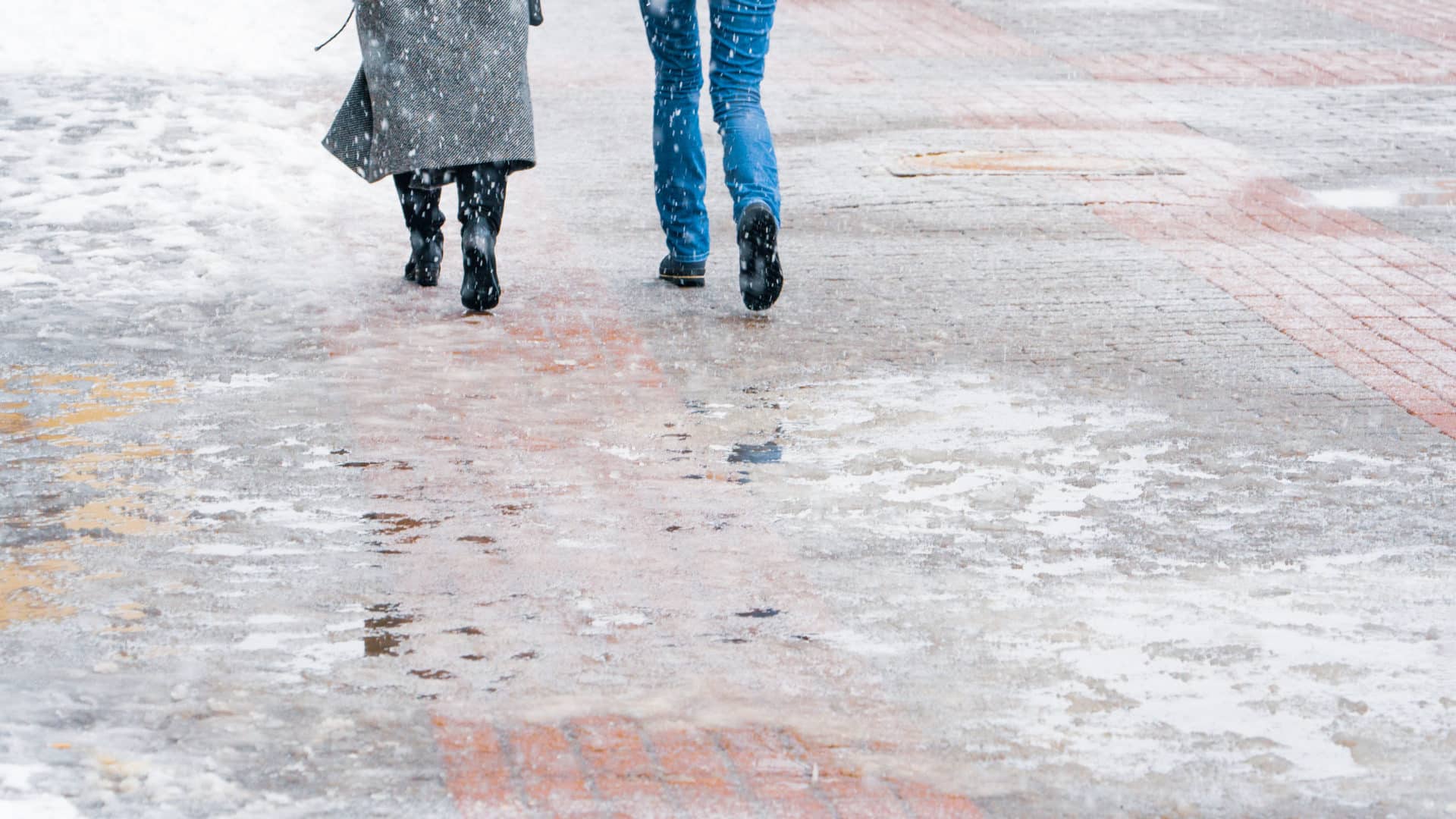Free Consultation
Free Consultation

New York is notorious for its wet winters. People slip and fall on snowy and icy surfaces all the time in this city. Much of the time, these falls are relatively harmless and don’t result in anything more than a bruise or a skinned knee.
But what happens when a slip and fall accident causes a serious injury?
When falls on slippery sidewalks occur because the owner of the property failed to clear the snow and ice in a timely manner after the storm, we consider them preventable injuries.
In this case, the accident victim can seek compensation to recover from their injuries in a premise liability case. Many of NYC’s sidewalks are the city’s responsibility to maintain, meaning that the city could be held liable for any slip and fall injuries.
That said, bringing a premise liability case against a government agency comes with its own set of challenges.
Under New York premise liability law, the party that owns, leases or occupies property has a duty to maintain the premises so that it is reasonably safe.
If the property’s occupant or owner knew or reasonably should have known about an unsafe condition on the property, that party can be held liable for injuries resulting from that hazard.
This includes clearing snow and ice from the sidewalk in a reasonable amount of time after a storm, for instance. In this case, you must be able to establish when you fell, and how long the sidewalk had been left uncleared.
Under New York City Administrative Code § 16-123, the party responsible for the property must remove snow, sleet, and ice from sidewalks that adjoin their property within 48 hours after the storm.
Many of NYC’s sidewalks are municipal, meaning that they are maintained by the city. So the city can be held liable for your injuries. Let’s take a simplified look at that often complex process.
As a government agency, the City of New York enjoys what is known as “sovereign immunity,” meaning that it is immune from many forms of liability. However, the city can still be held liable for negligence, such as failure to clear sidewalks of hazards such as snow and ice.
Pursuing damages from a government agency is often difficult because the city mounts its resources and defends these cases aggressively. However, an experienced premise liability attorney can successfully pursue damages for slip and fall injuries that occur on government property.
In most premise liability cases, the statute of limitations is within three years of the injury date. This is not the case if you are pursuing damages from the city or another government agency.
In most cases, a “Notice of Claim” must be filed within 90 days of your slip and fall accident. This places the city on notice that you intend to file a claim against them, and details the specifics of the accident, demonstrating the city’s liability.
In some cases and with some agencies, this period is actually even shorter, necessitating immediate action if you are seeking damages from a government agency.
After the notice of claim has been filed, you must file suit against the city within the ordinary statute of limitations.
If you are a victim of an NYC sidewalk fall and aren’t sure what to do next, reach out to an experienced New York liability attorney to develop a strong case. This is your best chance to successfully pursue damages to recover from your injuries.